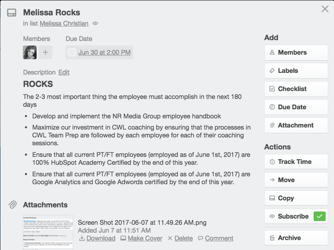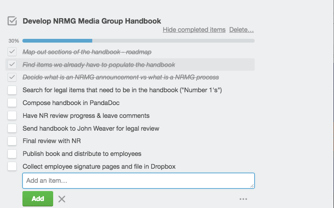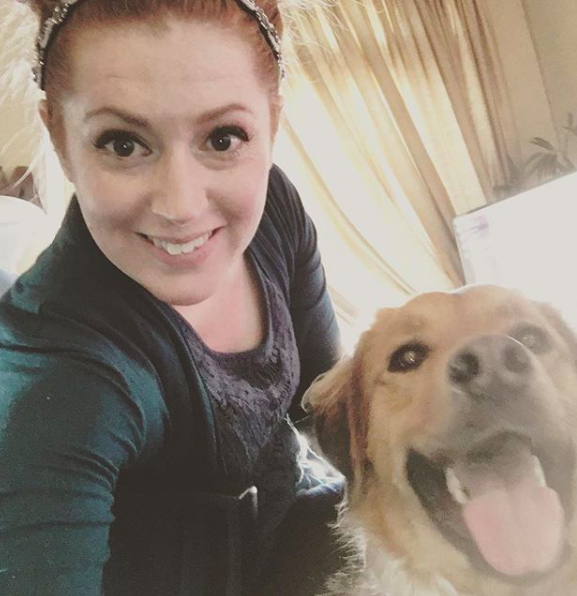 Increasing and maintaining the productivity of your employees is a challenge that business leaders consistently face. You may have the best staff to execute the services you provide, but if clear expectations aren’t set, the productivity of your team will surely suffer.
Increasing and maintaining the productivity of your employees is a challenge that business leaders consistently face. You may have the best staff to execute the services you provide, but if clear expectations aren’t set, the productivity of your team will surely suffer.
There are endless products, systems and processes out there that aim to streamline team productivity, but I’m going to share with you what has worked best for our team, which is the concept of employee "Rocks".
Employee Rocks Defined
Rocks, explained simply, are priorities.
Gino Wickman, author of Traction: Get a Grip on Your Business describes Rocks as the 3-7 priorities an employee needs to accomplish in a 90-day time period.
The purpose of creating individual Rocks for your team members is to keep them focused on what is most important in order to efficiently navigate their way to achieving their goal, and ultimately contribute to reaching the goals of the company.
You can put the best people in the right roles, but without clearly defined priorities, they may wander aimlessly. Establishing what the critical priorities are for each team member allows them to map out the steps they will need to take in order to be successful. Mapping out steps to accomplishing rocks also gives their supervisor a way to monitor progress.
So how does it work?
The double-edged sword here is that there is no clearly defined process for using individual employee Rocks, it’s up to your company to decide what works best for you.
For this blog's purposes, I’m going to share how our company, NR Media Group uses rocks to increase employee productivity.
Establishing Rocks
Our CEO, Nate Riggs, was tasked with establishing what each employee’s Rocks would look like.
First, he had to take a look at the companies goals. What are the most important items we need to accomplish as a team in the next quarter? Figuring out company goals lets us see what roles are involved in what areas, allowing a delegation of tasks.
Next, comes assigning ownership of tasks within the company goals.
For this we take a look at each employees role. What are the priorities of their role? What are the most important items they must achieve in order for the company to reach it's goals? Are they achievable in a 90-day period?
The most important of these priorities becomes the employee’s individual rocks.
Employee Rock Ownership
We’ve established what each team member’s rocks will be, we have a big picture, and now we need steps to get there.
At this point, our CEO tasks the employee with mapping their road to success. Consider this like a work-back schedule. The employee looks at how they will achieve their goals within the given time frame.
A list is made of the steps they will follow that will ultimately achieve their rock. These lists should be as detailed as possible and show a clear path to the desired result.
The employee now has a clearly defined set of achievable tasks and a time frame in which to complete them. Your have your rocks and can begin working them!
At this point we recommend a system for checking in to monitor progress. Every so often (we chose once per month) the employee and their supervisor sit down to weigh in on progress made towards their rocks. We look at:
- How close is the employee to achieving their Rock?
- Are they taking the path of least resistance to hitting their goal?
- Is the Rock still relevant to the company's goals?
What Do Rocks Look Like?
We have our Rocks and know exactly how we will work to achieve them. But where do we keep the information, and how do we monitor progress?
NR Media Group uses Trello for project and task organization, so we chose to house our employee rocks in a Trello board. Each employee has a “stack of cards” within the Trello board where they can actively work their rocks.
 The image to the left is what an employee Rocks card looks like.
The image to the left is what an employee Rocks card looks like.
This particular card belongs to me and I house all of my progress here.
Notice that there is a due date assigned to the card so that the time frame is clear.
The rocks are laid out in bullets. There are 1-2 sentences that clearly lay out the rocks.
Next let's take a look at a checklist in action. I have written out what I believe are the steps to be completed from start to finish. I may add in tasks when I see a gap, but this list will be my road map towards hitting my Rock.
You can see the items that have been accomplished, and what still needs to be done.A supervisor can chime in with comments and questions on the progress of the checklist, making sure that the employee is walking the right path.

Once a checklist is complete, the rock is should be achieved and the card can be archived.
Another plus to using a system like Trello is that it allows the whole team to have visibility to their teammate's rocks. Employees may be more driven to stay focused if they are being held accountable by their team.
Rocks for Increasing Employee Productivity
So why are Rocks important for increasing the productivity of your team? Is this system so much different from laying out goals and working on them day-to-day?
Let’s put a visualization to it.
You have some sand and rocks that all need to fit into a jar. If you were to pour the sand in first and then add the rocks, the rocks would sit on top. There wouldn’t be room for everything to fit. But, if you put the rocks in the jar and pour the sand around them, the sand will fill in the gaps around the rocks, and everything fits into the given space.
As we talked about before, rocks are the most important items that need to be accomplished; the priorities.
The sand in this scenario is the other tasks that need to be completed, but they are not the priorities that first need to be achieved. If the rocks are first put in the jar (accomplished), the sand (other tasks related to the company goal) will fill in around the rocks, making room for everything in the jar (the 90-day time frame).
When we are able to establish what our priorities are, we can create and agenda to work by that will lead us to our goal. Having a system for check-ins and insight allows the supervisors to have an understanding of where their team is in the timeline to completion.
When the system is worked correctly, employees are able to use their time to produce quality work towards their goals and achieve them in a timely manner.
Has your team worked with individual rocks? Let us know what system worked best for your company!



